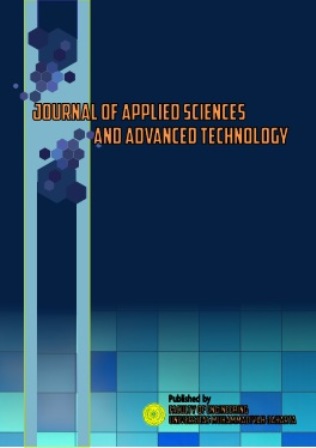Comparison Thermal Efficiency and Fuel Consumption of Electric Supercharger Variations For Otto Engine E70
DOI:
https://doi.org/10.24853/jasat.1.2.63-68Keywords:
Electric Supercharger, Pressure Wave Supercharger, Thermal Efficiency, Fuel Consumption, Otto EngineAbstract
A Pressure Wave Supercharger (PWS) is a technical way to increase the incoming pressure on a diesel engine. PWS utilizes hot cylinder exhaust gas energy to build in air pressure such as conventional turbo filling. In normal combustion the air and fuel mixture will burn perfectly if a stoichiometric mixture, gasoline fuel can be said to be stoichiometric if to burn 1 kg of fuel requires 14.7 kg of air. While the engine rotation is high, it requires a lot of fuel while the intake air is limited in number. Based on this description, an examination of air intake into the intake manifold is required with an Electric Supercharger which functions as an air compressor. Using the Otto engine with modifications to the piston, compression ratio, ignition timing, injection duration and E70% bioethanol fuel. With the installation of these tools, can get the characteristics of combustion and improve the problems that occur associated with a rich mixture so that the engine performance becomes optimal and exhaust emissions become minimal. The result of variations in Electric Supercharger voltage at 6 volts, 8 volts and 10 volts can be seen that the best performance such as bmep, thermal efficiency has increased respectively by 14.73%, 22.87%, and sfc has decreased by 23, 84%.Downloads
References
Sudarmanta, B., Darsopuspito, S., & Sungkono, D. (2014). Influence of bioethanol-gasoline blended fuel on
performance and emissions characteristics from port injection Sinjai Engine 650 cc. In Applied Mechanics and Materials, Vol. 493, pp. 273-280.
Sudarmanta, B., Junipitoyo, B., Putra, A.B.K. dan Sutantra, IN. (2016), “Influence of The Compression Ratio and Ignition Timing on Sinjai Engine Performance with 50% Bioethanol-Gasoline Blended Fuel”, ARPN Journal of Engineering and Applied Sciences, Vol. 11, No. 4, hal. 2768-2774.
Paloboran, M. E., Sutantra, I. N., & Sudarmanta, B. (2016). Performances and Emissions Characteristic of Three Main Types Composition of Gasoline-Ethanol Blended in Spark Ignition Engines. Analytical Energetic Approach for Predictive Generation of Dynamic Biped Walking-Use of Average Energies, 552.
Heywood, J.B, (1988), Internal Combustion Engines Fundamentals, McGraw-Hill, Inc., United States.
Jeuland, N., Montagne. X., dan Gaurot. 2004.Potentiality of Ethanol as a Fuel for Dedicated Engine. Journal of Oil & Gas Science and Technology. Vol. 59, No. 6, pp.560-565
Fikri Naziful. Studi Eksperimental Pengaruh Penambahan Udara Pembakaran Terhadap Unjuk Kerja Dan Emisi Gas Buang Engine Honda CB150R Berbahan Bakar Bioetanol E100 Jurnal Teknik Pomits 2016.
Renno Feibianto. Studi Eksperimental Pengaruh Rasio Kompresi dan durasi penginjeksian bahan bakar Terhadap Unjuk Kerja dan Emisi Gas Buang Engine HONDA CB150R Berbahan Bakar Bioetanol E100, Jurnal Teknik Pomits 2016.
Jeuland, N., Montagne, X. dan Gautrot, X. (2004), “Potentiality of Ethanol as a Fuel for Dedicated Engine”, Oil & Gas Science and Technology, Vol. 59, No. 6, hal. 559-570.
Kawano, D.S, (2011), Motor Bakar Torak (Bensin), ITS Press, Surabaya.
Turner, Dale, Xu, Hongming, Cracknell, Roger F, Natarajan, Vinod, Chen, Xiangdong. 2011. Combustion Performance of Bioethanol at Various blend ratios in a Gasoline Direct Injection Engine. Scienc Direct : Elsevier, 5 Januari 2011.
Rosid, Juli 2015, Analisis Proses Pembakaran Sistem Injection Pada Sepeda Motor Dengan menggunakan Bahan Bakar Premium dan Pertamax, Jurnal Teknologi, Volume 7, No.2, Fakultas Teknik Universitas Muhammadiyah Jakarta.
Rosid, Juli 2016, Analisa Proses Pembakaran Pada Motor Bensin 113.5 cc Dengan Simulasi Ansys, Jurnal Teknologi, Volume 8, No.2, Fakultas Teknik Universitas Muhammadiyah Jakarta.
Downloads
Published
Issue
Section
License
COPYRIGHT POLICY
The author(s) of an article published in the Journal of Applied Sciences and Advanced Technology (JASAT) retains ownership of the intellectual property rights in work (s).
PUBLISHING RIGHTS
The author(s) of an article published in the Journal of Applied Sciences and Advanced Technology (JASAT) have unrestricted publication rights. The authors give the Journal of Applied Sciences and Advanced Technology (JASAT) the right to publish the article and designate the Faculty of Engineering Universitas Muhammadiyah Jakarta Publishing as the original publisher of the article.
LICENSING POLICY
JASAT is an open-access journal that follows the Creative Commons Non-Commercial 4.0 International License (CC BY-NC 4.0), which states that:

Under this license, the reusers must give appropriate credit, provide a link to the license, and indicate if changes were made. Users may do so in any reasonable manner, but not in any way that suggests the licensor endorses users or their use.
Please take the time to read the whole license agreement (https://creativecommons.org/licenses/by-nc/4.0/). As long as reusers follow the license conditions, the owner cannot withdraw these freedoms. The following components are included under this license:
 Attribution: Users must provide appropriate attribution, including a link to the license, and indicate whether or not they made any modifications. Users are free to do so reasonably, but not in a manner that indicates the licensee approves of their usage.
Attribution: Users must provide appropriate attribution, including a link to the license, and indicate whether or not they made any modifications. Users are free to do so reasonably, but not in a manner that indicates the licensee approves of their usage.
 NonCommercial: Users may not use the material for commercial purposes.
NonCommercial: Users may not use the material for commercial purposes.












_2.png)


1.png)

2.png)
